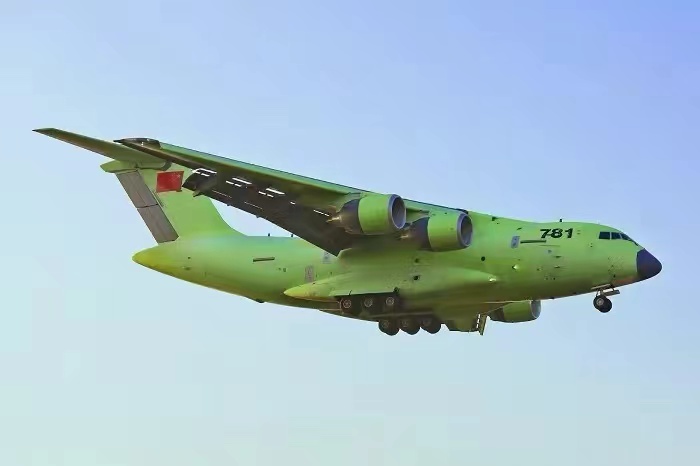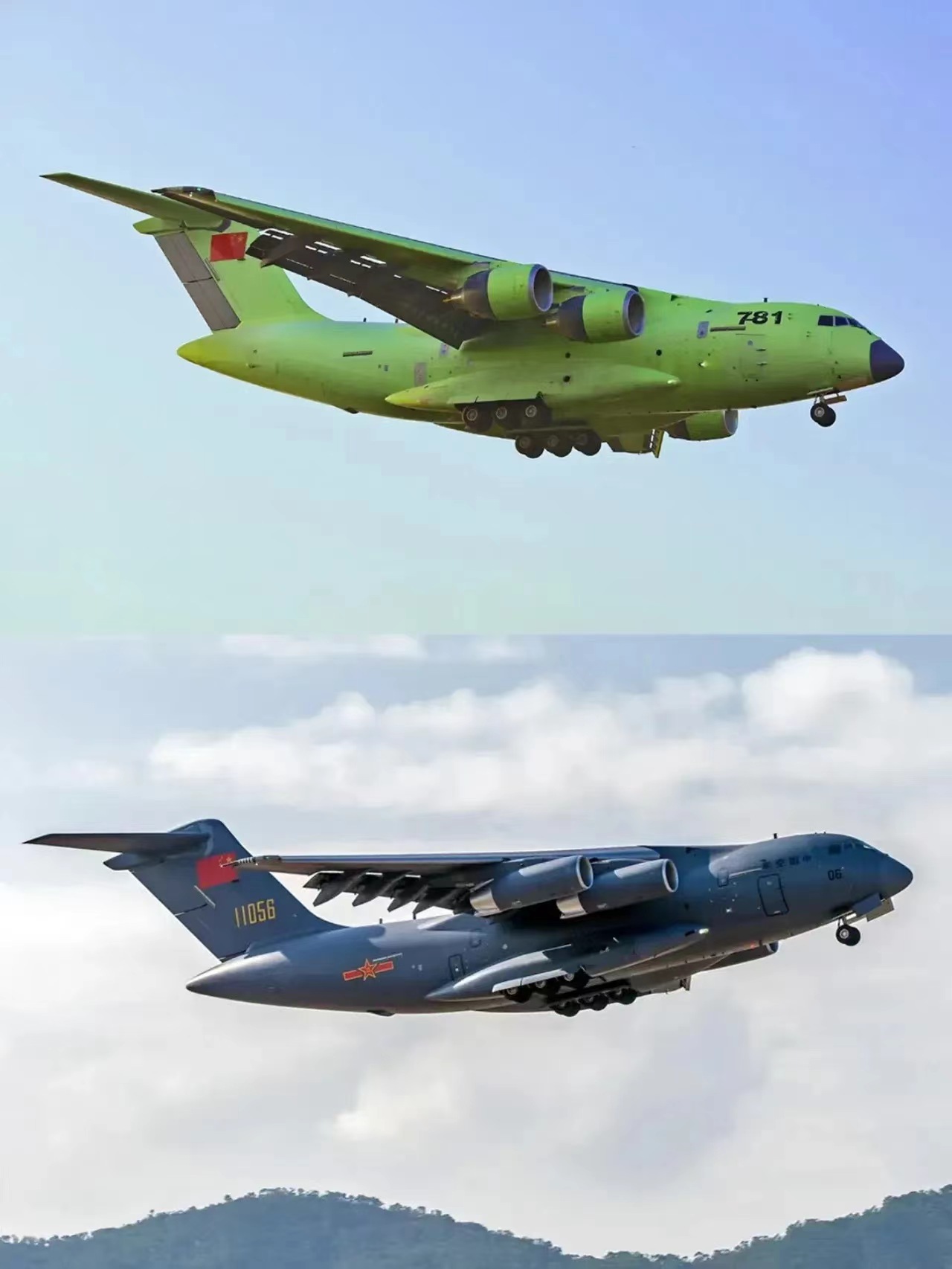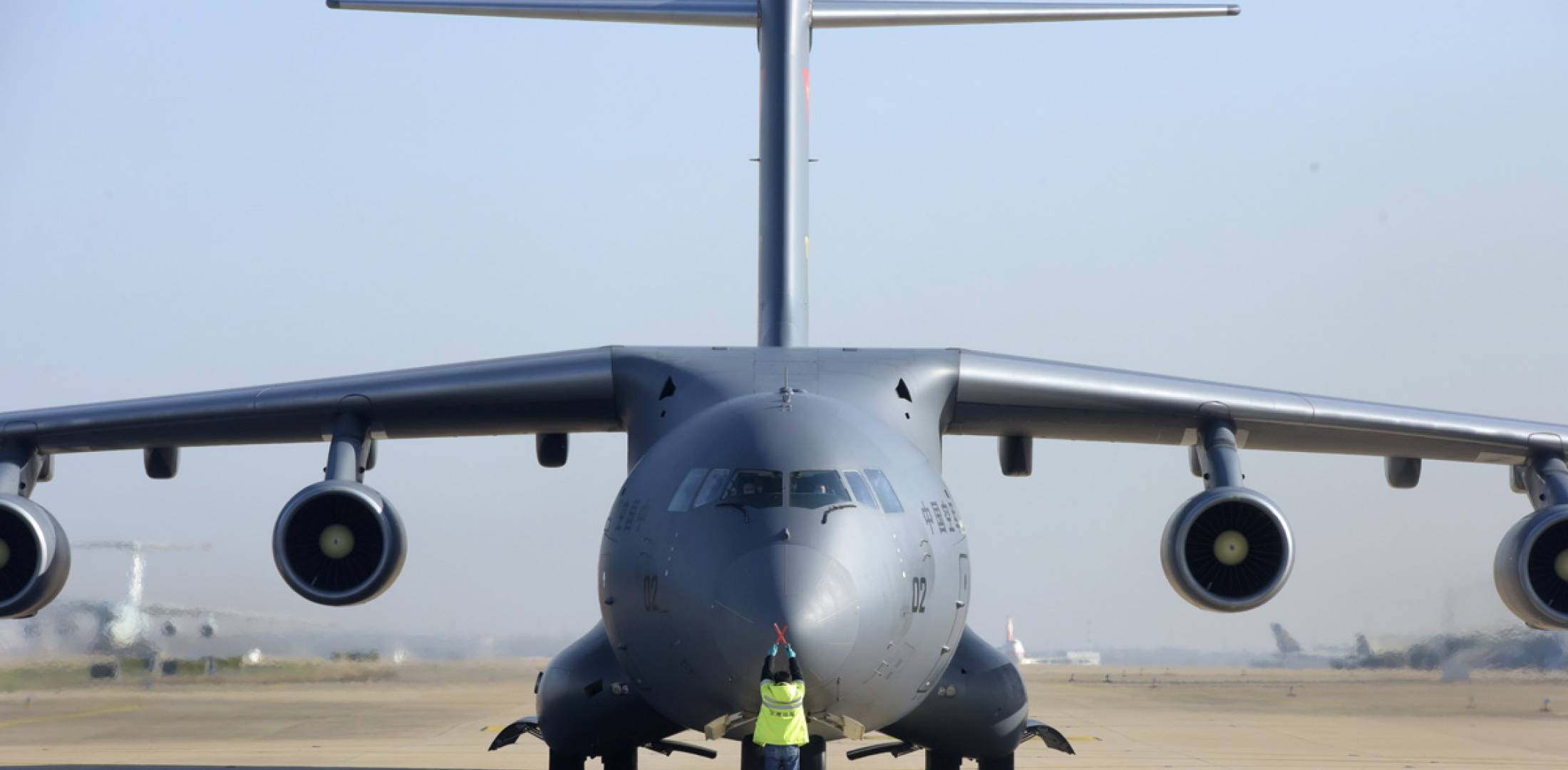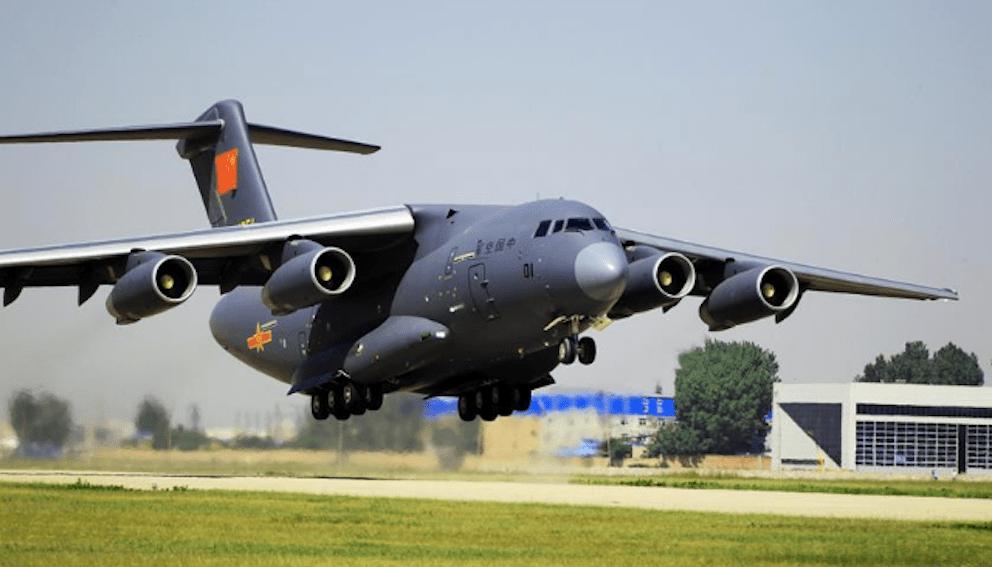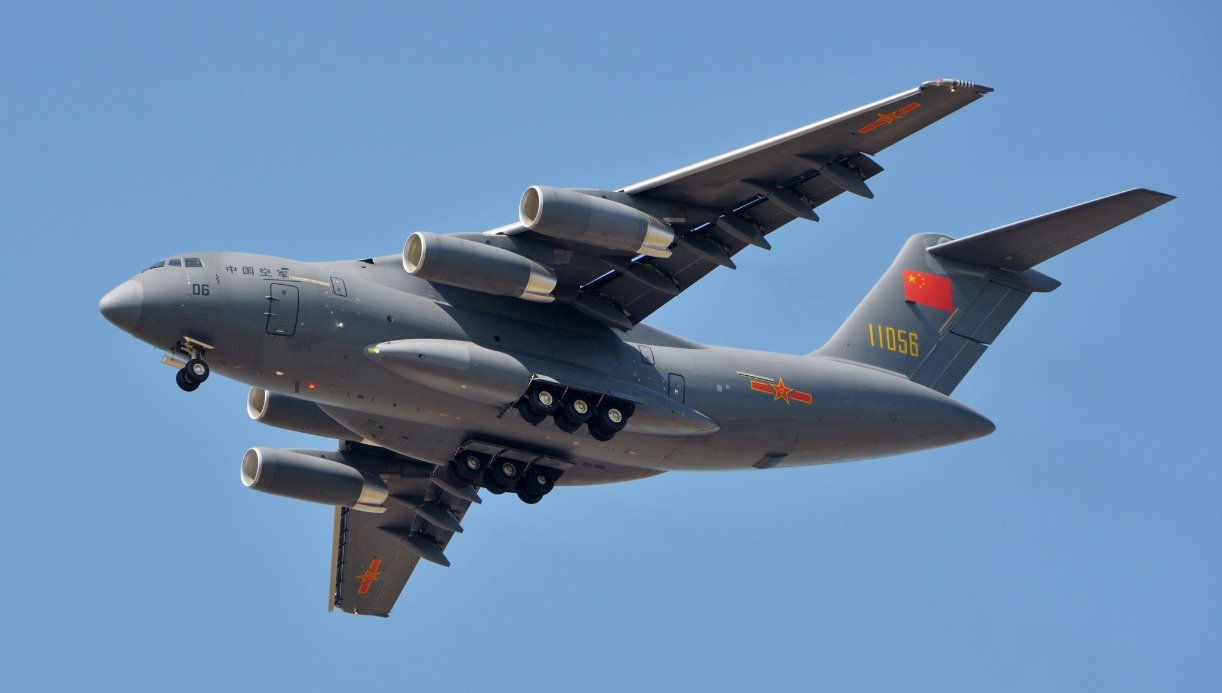beijingwalker
ELITE MEMBER

- Joined
- Nov 4, 2011
- Messages
- 65,187
- Reaction score
- -55
- Country
- Location
Our Best Look At China’s Re-Engined Y-20B Cargo Jet,China’s military transport aircraft powered by the domestically produced WS-20 high-bypass turbofan engine
BYTHOMAS NEWDICK|PUBLISHED APR 6, 2023 2:32 PM EDTNew video has emerged of the latest, re-engined version of China’s Xi’an Y-20 military transport aircraft. The Y-20B, which is powered by the domestically produced WS-20 high-bypass turbofan engine, is a significant development compared to the earlier models, which relied on Russian-supplied Soloviev D-30KP-2 engines. What’s more, there are now indications that the improved Y-20B may now be in operational service with the People’s Liberation Army Air Force, or PLAAF.
The video in question appears to have been shown on the Military Report program, produced by the state-run CCTV-7 television channel, which is dedicated to People’s Liberation Army content. The report shows a Y-20B being loaded with cargoes that are later air-dropped under parachutes, an important mission for the type, reflecting how it could be used in an airborne assault role.
As to the claims that the Y-20B is now operational with the PLAAF, that certainly seems possible, although the aircraft in the video lacks serial numbers, so it could also be a pre-series example being used for operational trials. On the other hand, such identification markings could have been obscured for the type’s public appearance.
It’s a measure of the importance of the WS-20 turbofan that it was always planned to fit the Y-20 with these engines, to maximize its considerable potential as well as to remove reliance on a foreign engine supplier. In the case of Russia, and the supply problems that its war in Ukraine has brought, that is now a particularly important consideration.
In terms of output, the WS-20 is expected to produce around 31,000 pounds of thrust, compared to 26,450 pounds for the D-30KP-2, which equips the original Y-20A, which first entered operational service in 2016. Low-bypass engines, like the D-30KP-2 don’t produce the same level of thrust as high-bypass units of similar size and, furthermore, are significantly less efficient.
With this in mind, China aerospace observers were long awaiting a re-engined version of the Y-20 to appear although there were several false starts, with doctored and faked images emerging initially. Finally, as The War Zone reported at the time, seemingly definitive evidence of a Y-20 with WS-20s came in photographic form in late 2020. The aircraft was apparently conducting a test flight at Xi’an-Yanliang Air Base.
Even before the WS-20 became available, China was pouring considerable resources into a design that is very loosely analogous to the U.S. Air Force’s C-17 Globemaster III and which represents a huge advance over the aging array of less-capable transport aircraft previously used by the PLAAF. Before the Y-20 appeared, the PLAAF’s most effective transport was the Russian-made Il-76 Candid — also powered by the D-30KP-2 — but Beijing long struggled to source these in meaningful numbers, with only around 20 in use.
In particular, the production rate of the Y-20 has been noteworthy, with examples of the transport coming off the line at Xi’an at a prodigious rate.

No less than 20 Y-20s were noted at Xi’an-Yanliang Air Base in December 2019. PHOTO © 2019 PLANET LABS INC. ALL RIGHTS RESERVED. REPRINTED BY PERMISSION
The importance of the Y-20B to the PLAAF’s broader modernization efforts also seems to be reflected in the pace with which the re-engining program has been run. At one point, it was predicted that the WS-20 might only become available in 2024 and then only in limited production. It remains to be seen whether the WS-20’s production rate will keep up with that of the Y-20, although if the PLAAF has declared the B-model operational, that suggests that there is at least a degree of confidence that the engines will be available in the required numbers.
Whether this acceleration is a case of the WS-20 having assumed a higher priority, or whether the engine faced fewer developmental problems than expected, the Y-20B now appears to be poised for service — with all the benefits that it will bring the PLAAF once fielded in numbers.
In the past, of course, China has battled with some serious difficulties in fielding modern turbofan engines, a problem that has dogged some of its fighter programs in the past. Now. however, most of those issues seem to have been addressed, with the WS-10 fighter engine, for example, now in widespread service.
As we have discussed before, the Y-20 plays a very important role in helping the PLA meet its wider ambitions, including deploying and sustaining forces over much greater distances, as befitting a true global power. As such, the Y-20 is able to transport cargo as big and heavy as the Type 99 main battle tank, and others.
The re-engined Y-20B will only increase the aircraft’s ability to transport significant amounts of equipment and supplies to forward areas, the kinds of missions that would be required to support any kind of sustained operations by the PLA in the wider Asia Pacific region.
The increased efficiency of the WS-20 will bring not only longer range, vital for supplying more far-flung outposts, including bases outside the Asia Pacific. The WS-20 should also bring improved field performance, which is very important for an airlifter like this that is also expected to operate from unimproved surfaces.
Even with the original D-30KP-2 engines, the Y-20 is able to move very useful loads, with a reported maximum payload of 132,000 pounds, which puts it well ahead of the 96,000 pounds carried by the PLAAF’s Russian-made Il-76 Candid airlifters.
Nevertheless, the Y-20 — at least with D-30KP-2 engines — still falls some way short of the capacity of the U.S. Air Force’s C-17, the payload of which tops out at 170,900 pounds. We don’t yet know to what degree the re-engined Y-20B might be able to close the gap with the C-17, although it will certainly help.
As well as its routine military work, the Y-20 has also already been used for humanitarian missions, notably in the response to the COVID-19 outbreak, when it carried medics and humanitarian supplies to the Chinese city of Wuhan. This is a mission we looked at in depth in this previous War Zone article.
Arguably the most tantalizing aspect of the Y-20B, however, is what other versions of the re-engined aircraft might yet emerge.
Xi’an has pitched a civilian cargo derivative of the Y-20, exhibited in model form as the Y-20F-100, already with WS-20 engines. Having a civilian version available with Chinese-made engines would be a major boost for potential operators. Meanwhile, the ongoing struggles of the Russian aerospace industry in the face of international sanctions could even see a civilian Y-20B fill the niche currently filled by the Il-76, especially for commercial chartered airlift.
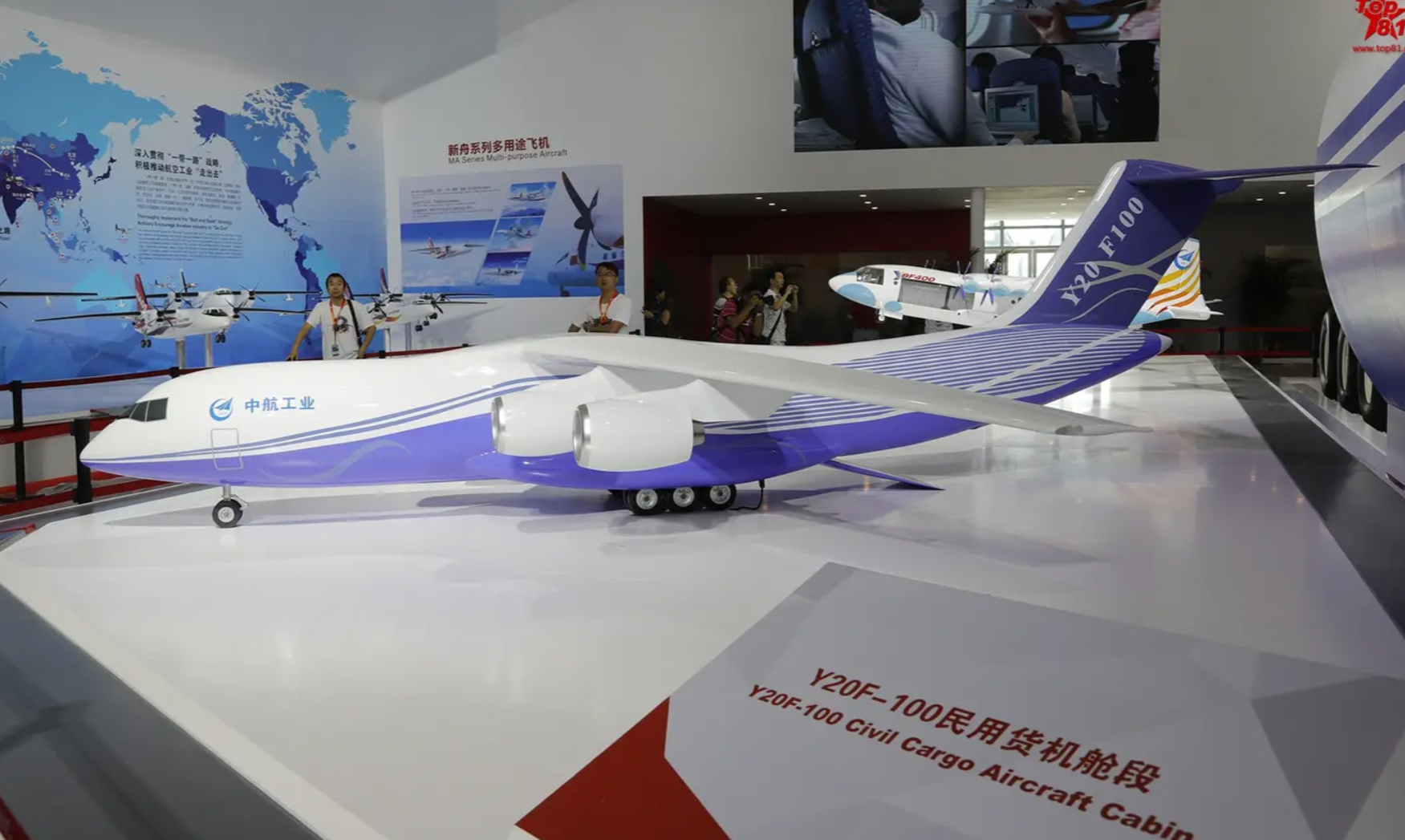
A model of the civilian Y-20F-100 with WS-20 engines. VIA CHINESE INTERNET
The Y-20U aerial refueling tanker is already operational, with D-30KP-2 engines and would make an obvious candidate to receive WS-20s in the future. With the basic Y-20U already regularly supporting PLAAF missions into the highly strategic Taiwan Strait, the added payload capacity and efficiency of a re-engined version would clearly bring dividends.
Tanker capacity is something that the PLAAF badly lacks, with just three second-hand examples of the Soviet-era Il-78 Midas in use, together with tanker conversions of the H-6 Badger bomber. As the PLAAF increasingly flexes its muscle in the South China Sea and East China Sea, as well as in the Taiwan Strait, tanker support is vital, not least for any future military intervention against Taiwan.
There have also long been rumors of a new airborne early warning and control (AEW&C) platform based on the Y-20 airframe, perhaps to be designated KJ-3000. Here, again, the more efficient WS-20 powerplant would make a great deal of sense. While you can get the full lowdown on Chinese AEW&C developments in this feature, it’s worth noting that a radar-plane version of the Y-20 remains unconfirmed for now.
There are also unconfirmed suggestions that a wind tunnel model of the KJ-3000 has been tested and a photo of a model released in December 2022 — showing a Y-20B-based design — may speak to an AEW&C derivative. On the other hand, this model lacks the traditional rotodome for the main radar antenna, instead having a series of large radomes above and below the forward fuselage, as well as smaller fairings on the leading edges of the sponsons. This has led to speculation that it may relate to an airborne command post or long-range communications aircraft, perhaps to work with the PLAN’s ballistic missile submarines (SSBNs), like the U.S. Navy’s E-6B Mercury. That could make sense in light of recent developments, including the news that China is now keeping one SSBN on patrol at all times as a persistent second-strike deterrent.
Whatever the truth behind the model of the radome-equipped Y-20B, it seems the re-engined transport is now here to stay. There seems little doubt it will continue to expand the PLAAF’s previously neglected airlift capabilities and will likely start to appear in other variants in the future, too. Meanwhile, with the Y-20 reaching its potential, this is a major strategic advance for China and one that will only help it realize its ambitions of being the top global power.
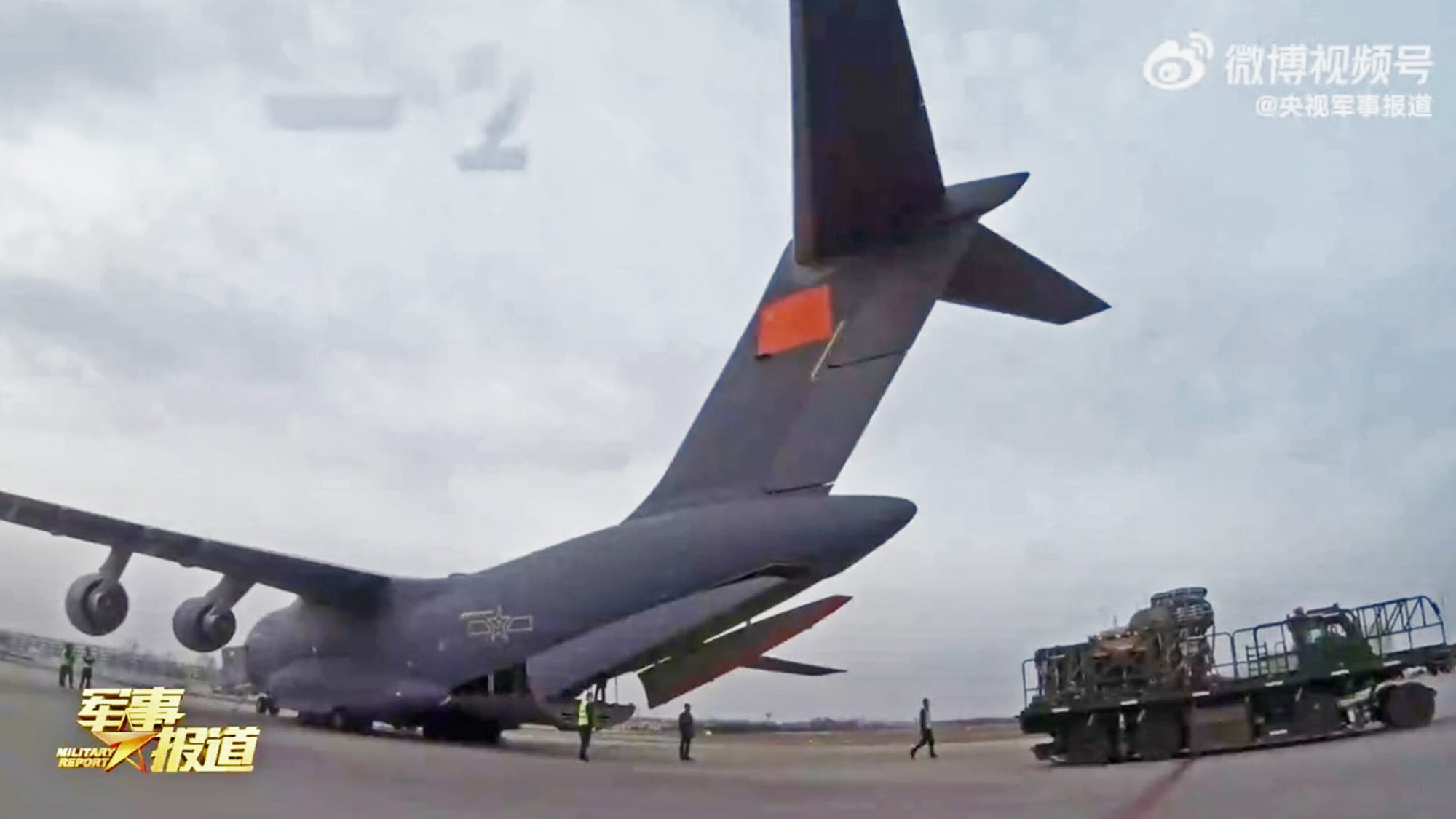
Our Best Look At China’s Re-Engined Y-20B Cargo Jet
Reports from China indicate that the Y-20B, with locally produced engines, may now be in operational service.

